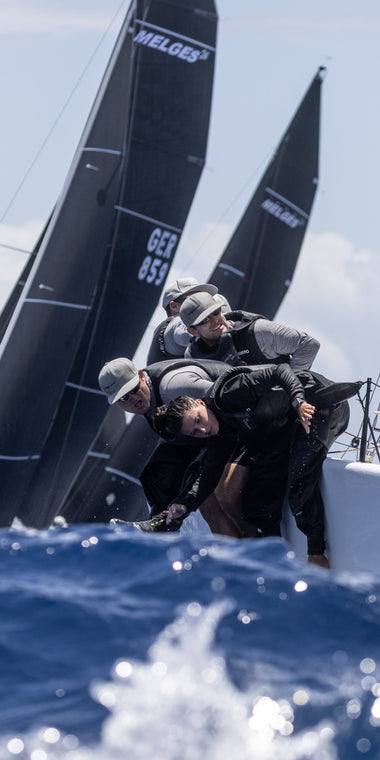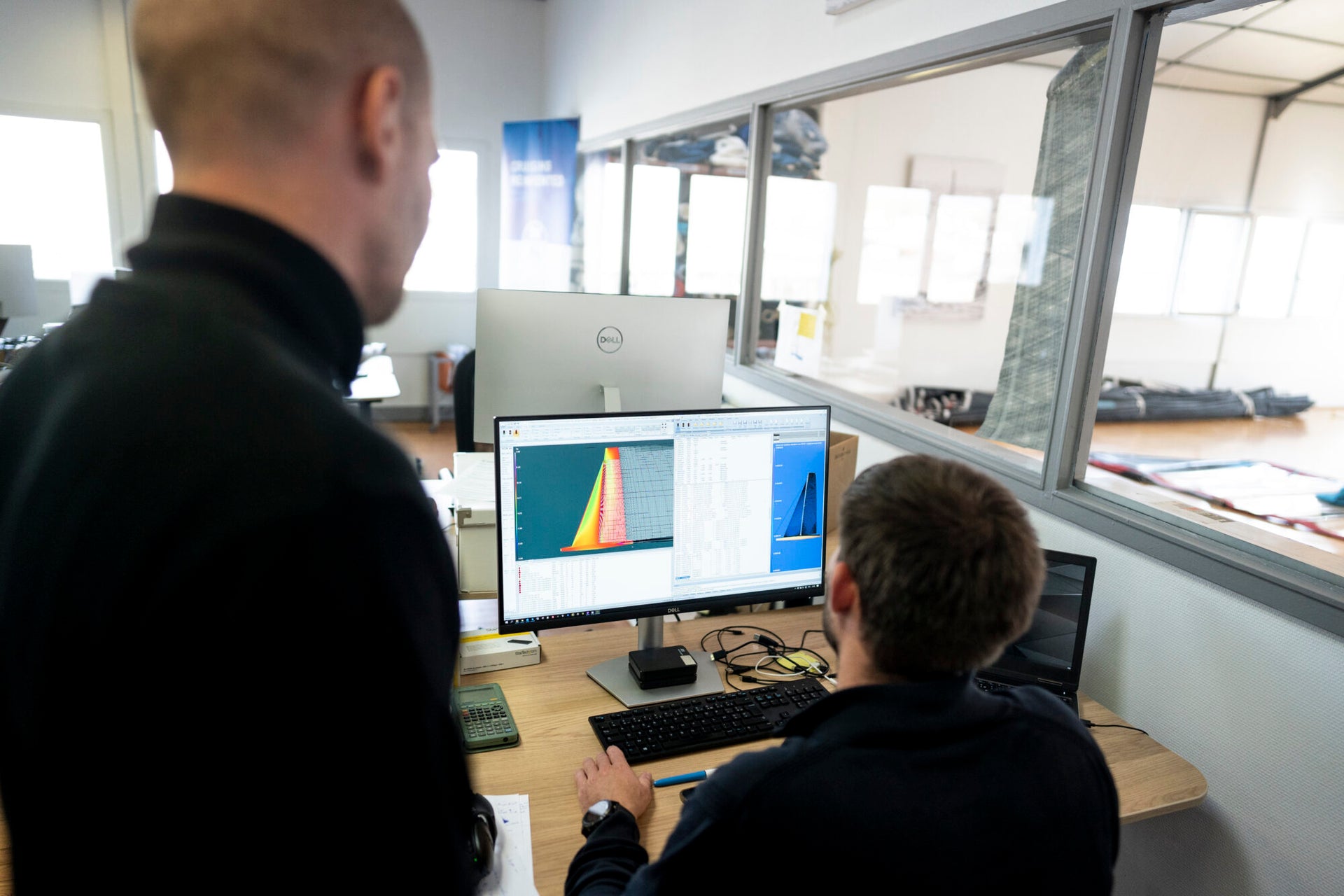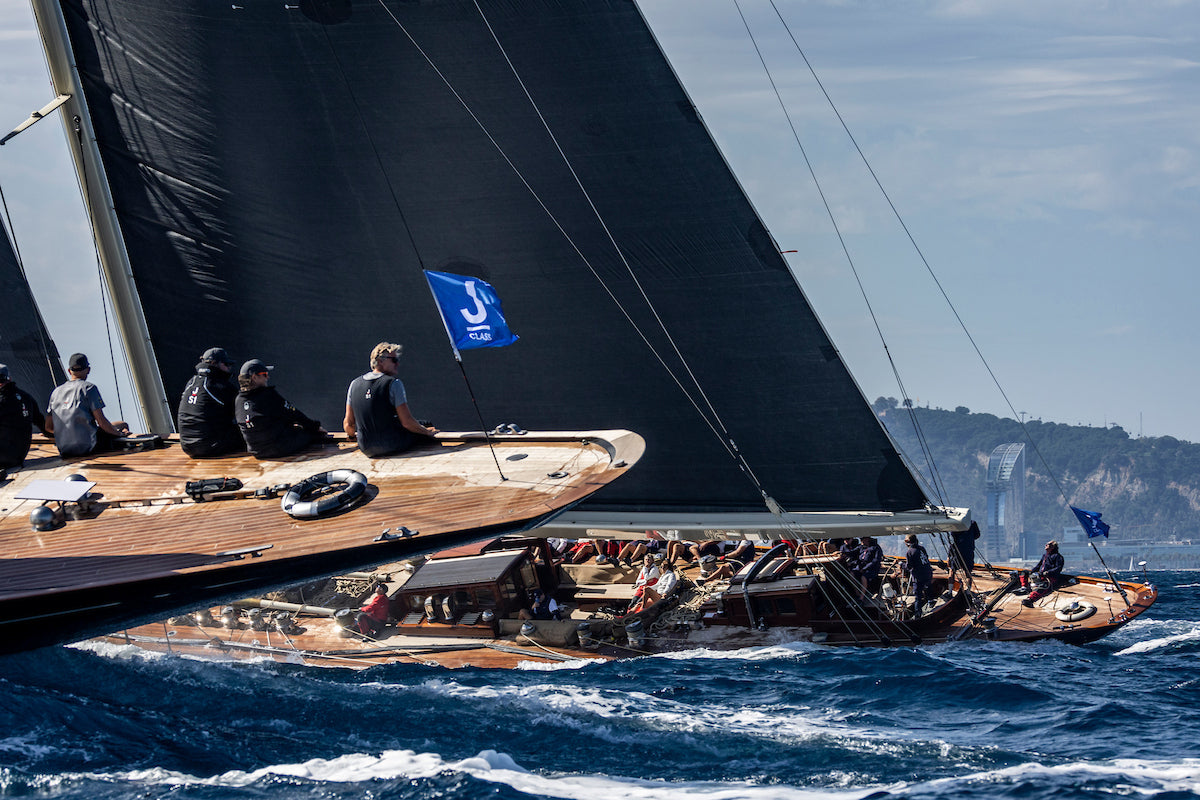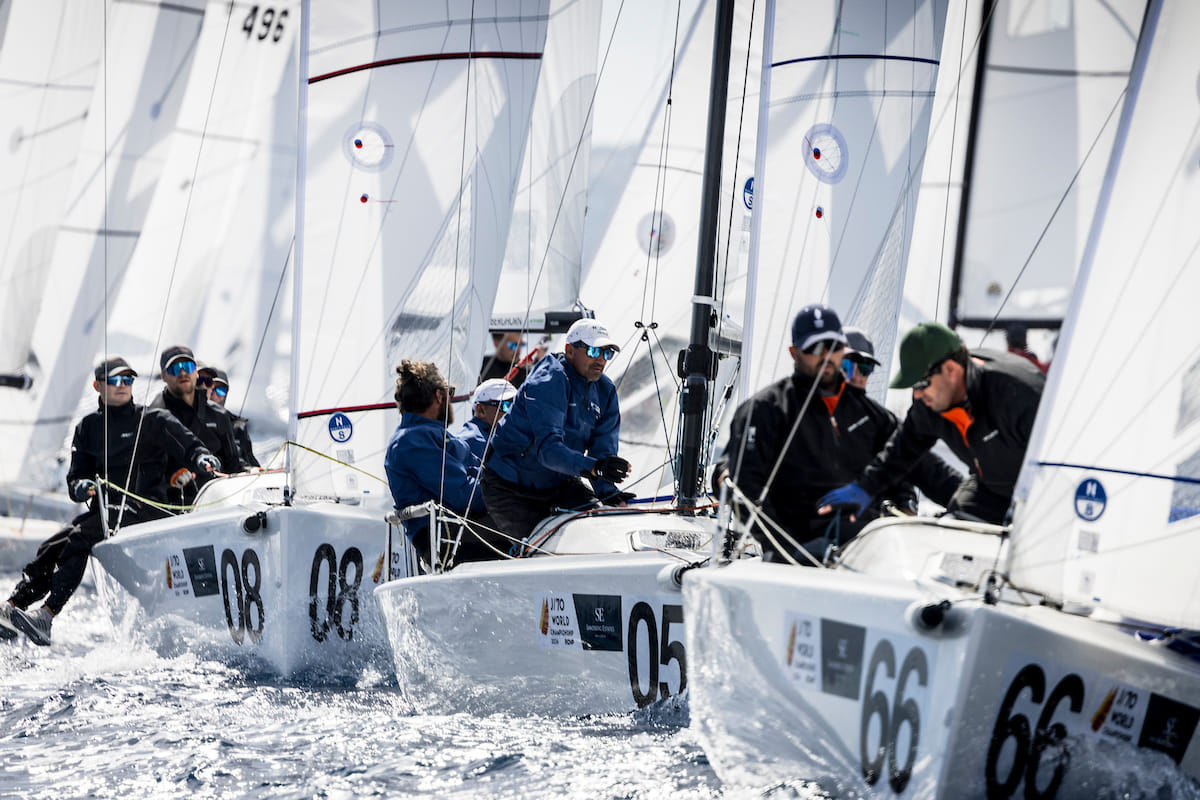SEEING YOUR DESIGN WORK IN ACTION
THE NORTH SAILS TEAM IS READY TO SEE THEIR WORK IN ACTION
Head of R&D Gautier Sergent and Sail Designer Quentin Ponroy Discuss the Upcoming Transat Jacques Vabre
On 7 November, the toughest and longest-running two-handed transat sets off for the Caribbean from Le Harve, France. Alternatively known as “the coffee route,” the biannual Transat Jacques Vabre (TJV) attracts the sport’s most successful offshore sailors and captivates sailing fans around the world.
Four classes will race across the Atlantic with the IMOCA and Ocean50 boats crossing the Equator and round the Brazilian archipelago Fernando de Noronha before heading to the French West Indies. The Class40s will race a shorter route, leaving Cape Verde to starboard before heading to Martinique. And last, but definitely not least, the mighty Ultims will dive further South than the IMOCAs, rounding another Brazilian archipelago off the coast of Rio de Janeiro before heading to the Caribbean. Even with three different routes, every team in the 2021 TJV will have to manage a myriad of challenges including (but not limited to) the English Channel, the Bay of Biscay, the Doldrums, and enough highs and lows to make any skipper’s spin.

“The Transat Jacques Vabre is a very influential race,” says Gautier Sergent, Head of R&D at North Sails. “Not only is it a proper offshore event, but it’s also doublehanded which means you get to push the boat. Plus, there is a large fleet that attracts the best sailors. The race is also early enough in the design cycle, so you get to test a few things with your sails.”
Historically speaking, the success of this offshore race is defined by strategy, tactics, and grit. However, 2021 is a bit different. The teams and their platform are so closely matched, this edition’s wins will come down to innovation, technology and (you guessed it) sail selection.
For example, all five Ultims will be racing with North Sails, so, in the mind of Charles Caudrelier (co-skipper of Maxi Edmond de Rothschild), the outcome of the race weighs heavily on the relationship between the sailors and their North Sails design team.
“We work in very close collaboration with our designers for two reasons,” Caudrelier explains. “Designing, for one, and then also ongoing R&D study for the future. This is the future, and the sails are the power—the engine of the boat. The big choice we can make is not only the type of sail, but also the relationship we have with North Sails and the designer who is in charge of the boat. If you have a good collaboration with your designer, you can always be one step ahead of the other teams.”
Even though the TJV is one race, the various projects for the North Sails team represent a significant amount of work. After each race from this last year, the designers took into consideration everything from the 2021 offshore events. We sat down with Sergent and sail designer Quentin Ponroy to learn more about getting the sails to the start line.
Ponroy explains, “to prepare the IMOCAs for the TJV, we began by gathering all of the feedback and data from recent races, like Vendee Globe, The Ocean Race Europe as well as the Fastnet. From these races, we’ve collected a lot of critical information.”
“We built too many new sails to count between all the classes, but especially the IMOCAs whose sails were quite tired after the Vendee Globe,” says Sergent. “But, over the last year, we’ve witnessed some boats are really finding that next gear and are becoming super quick and learning to use the foils better. In the coming months, we expect to see even more of this from other teams – and support them in discovering their perfect sail set combination.”
The North Sails team is excited about this year’s TJV race for many reasons, one of them being the unique course.
“The spinnaker is the key sail for the TJV,” Ponroy remarks.
“A lot of this race will be decided downwind, and it will be a great opportunity for us and the teams to test the downwind gear,” explains Sergent. “After the Azores, it is normally a VMG downwind race meaning you must gybe downwind to get to the finish, so we’ve put a lot of emphasis into the downwind sails.”
The North Sails team is also impatiently awaiting the data they’ll receive at the end of the race.

“Because the TJV is a doublehanded race, the sailors push the button a little harder. So, we get a little bit closer to the design world where everything is perfect, 100% they’ll get to use the boat closer to its full potential. It’s a very good opportunity for North Sails to compare the performance of the boat with the numerical tools,” Gautier says.
“The learnings from these races are phenomenal. Like I’ve said it’s a downwind race, so we get to test a lot of downwind gear especially with the way you handle the sails- the way you furl the sails. We’ll be looking at the new techniques. Most of the boats, across all four classes, have Helix sails so we’ll get to see the range of these sails. Obviously, they go offshore and we’ll see a lot of variations of sea and wind conditions. To be honest, because it’s shorthanded, it’s the closest thing to cruising—bluewater cruising—where you want the most versatile and efficient sail you can have.”





























